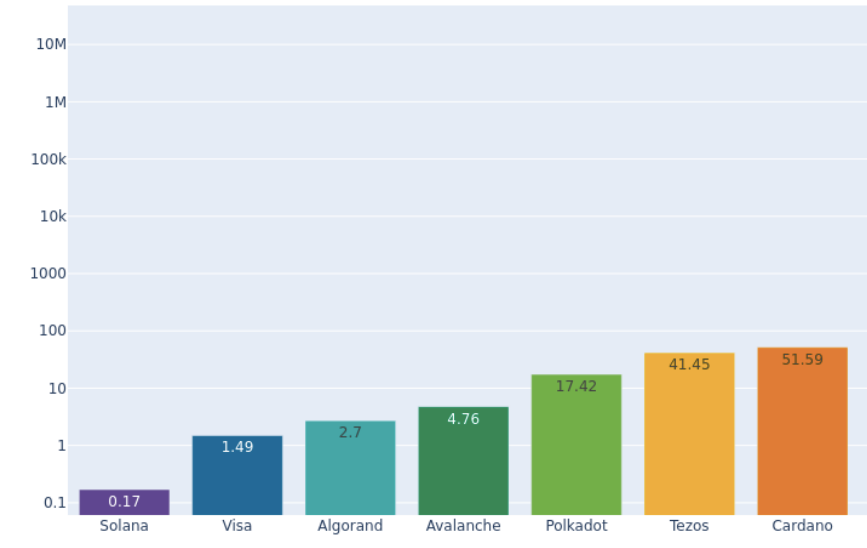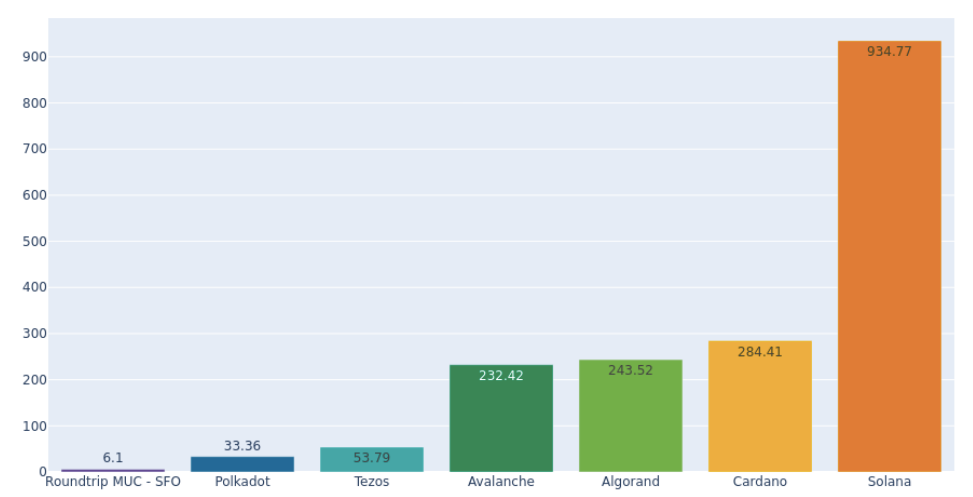According to the research report recently released by the Crypto Carbon Ratings Institute (CCRI), despite using the most electricity per transaction, Cardano, the largest proof-of-stake (PoS) blockchain, uses the least amount of electricity per node.
Going by the report, the Cardano network consumes the largest amount of electricity per transaction at 52 watt-hours (Wh). Howbeit, the organization noted that Cardano consumes the least amount of electricity per node, compared to other PoS blockchain projects analyzed in the research.
Read Also: Cardano to Increase Its Network Block Size By 11%. Here’s Why This Is Important

CCRI noted:
“This metric depends on the amount of transactions taking place on the respective blockchain, also the overall electricity consumption per transaction further depends on the number of nodes connected to the respective network. Generally, these numbers are expected to go down with an increase in the transaction rate, regardless which blockchain is in use.”
It’s shown in the report that Solana (SOL) consumes the least amount of electricity per transaction among other PoS networks at 0.166 Wh.
It’s also important to note that Only Solana ranked lower in energy per transaction than the payments giant Visa with 1.49 Wh. Behind Visa, Algorand ranked third at 2.7 Wh, followed by Avalanche, Polkadot, Tezos, and Cardano.

Read Also: Number of Plutus-Based Smart Contracts on Cardano Surpasses 1000 Milestone
Speaking with Cointelegraph, CCRI CEO, said:
“The hardware, itself, requires electricity just to be powered on, the same applies also for running the software without any transactions being executed. If the number of transactions now increases, also the electricity consumption does, but the share for a single transaction decreases. Therefore, we expect this to be the case for every blockchain in our study.”
It’s stated further that despite Solana’s low energy consumption per transaction, the PoS blockchain still consumes a lot of energy due to the network’s increasing usage.
Read Also: CryptoCompare: Number of Addresses Holding Cardano (ADA) Hit All-Time High of 4 Million in December
According to the study, the Solana blockchain emits 934 tonnes of carbon dioxide (CO2) equivalent per year, compared to 33 tonnes for Polkadot and 284 tonnes for Cardano.



